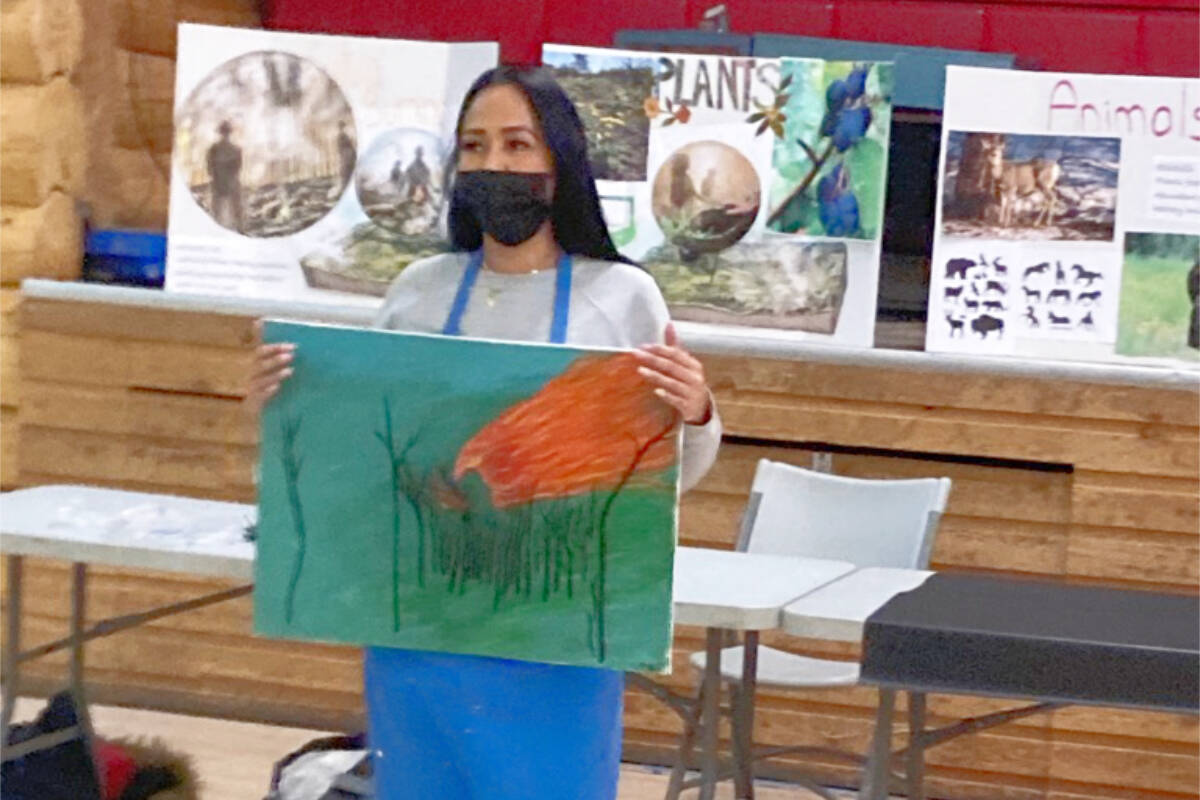Art and culture, we know these go together, but who ever thought of combining art and cultural burning?
Peter Holub did.
Holub is the ecosystem restoration specialist for the British Columbia Ministry of Forests. Holub happens to live down the road from Tiffany Jorgensen, a Cariboo Art Beat artist, the local art collective and studio.
Conversation with Jorgensen sparked him to consider art as a way to help restore and rebuild relationships between local First Nations and government.
Holub is working to integrate more cultural burning practices into forest and range management, and he wants to learn from the elders and fire keepers in local communities.
He said he thought art could help “start the conversation again. The practice hasn’t happened for so long.”
Cultural burning is a term for the traditional practice of burning or prevention of burning for the health of particular plants and animals by Indigenous peoples, when the term is used in the context of forest management. The term cultural burning can also be used in other contexts with Indigenous practices.
While cultural burning was developed and used by First Nations on the landscape for generations, it fell out of practice and laws made its use more challenging after colonial settlement.
Generations of fire suppression and forest management on the landscape have now combined with climate change to help create the conditions which led to a succession of devastating wildfire seasons, including 2017 and 2018 when smoke filled the air and communities throughout the region were forced to evacuate their homes.
One of the realizations since these fire seasons has been the importance of low-intensity fires on the landscape. The integration of Indigenous practices and knowledge was one of the key recommendations identified in the Abbot/Chapman report produced after the 2017 wildfire season and an action plan based on its recommendations in 2018.
The challenge was how to regain the trust between government and the First Nations communities in order to learn and integrate these practices.
So the idea of creating art-based workshops to help rebuild bonds between the First Nation communities and government forest managers was born.
“I see this as a start to move forward,” said Holub.
Being able to spend time with the participants and hear stories, Holub said was “humbling” and he recognizes it will be a long process to be able to move forward with integrating more cultural burning practices.
“There’s a lot of steps from here to putting fire on the ground,” said Holub.
Four art-based workshops took place in the communities of Williams Lake First Nation at Sugar Cane and two at Yunesit’in (Stone) led by Cariboo Art Beat artist Sarah Sigurdson.
“It’s been fun to kind of sit back and go where it needs to go,” said Sigurdson, of the participant-led nature of the workshops.
Sigurdson said she learned a lot from leading the workshops, which she aimed at creating space for conversations.
“It was a really safe space,” she said. The workshops were tailored differently for each community and both integrated forest materials like juniper, sage, rosehips and burned bark from the 2017 wildfires.
She said while some participants, like her, didn’t know much about cultural burning or fire, everyone had a way to relate to it, whether it was from the 2017 fires or enjoying the local landscapes.
“It was really about connecting to the land and ourselves,” explained Sigurdson.
“I believe education and honest communication is how we can connect the past to the future in a positive way.”

